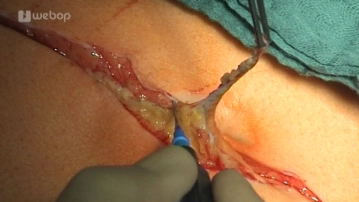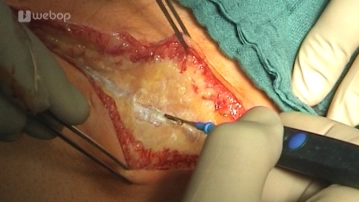The surgical sequence demonstrated here is based on the example of a patient with complete adhesiolysis following previous midline laparotomy.
Following appropriate prepping and draping, excise the old scar and extend the incision craniad and caudad, if necessary.
Tip: Before excising the scar always check that there is enough skin available. Otherwise, it will be difficult to achieve tension-free skin closure, resulting in ugly scars and impaired wound healing.



